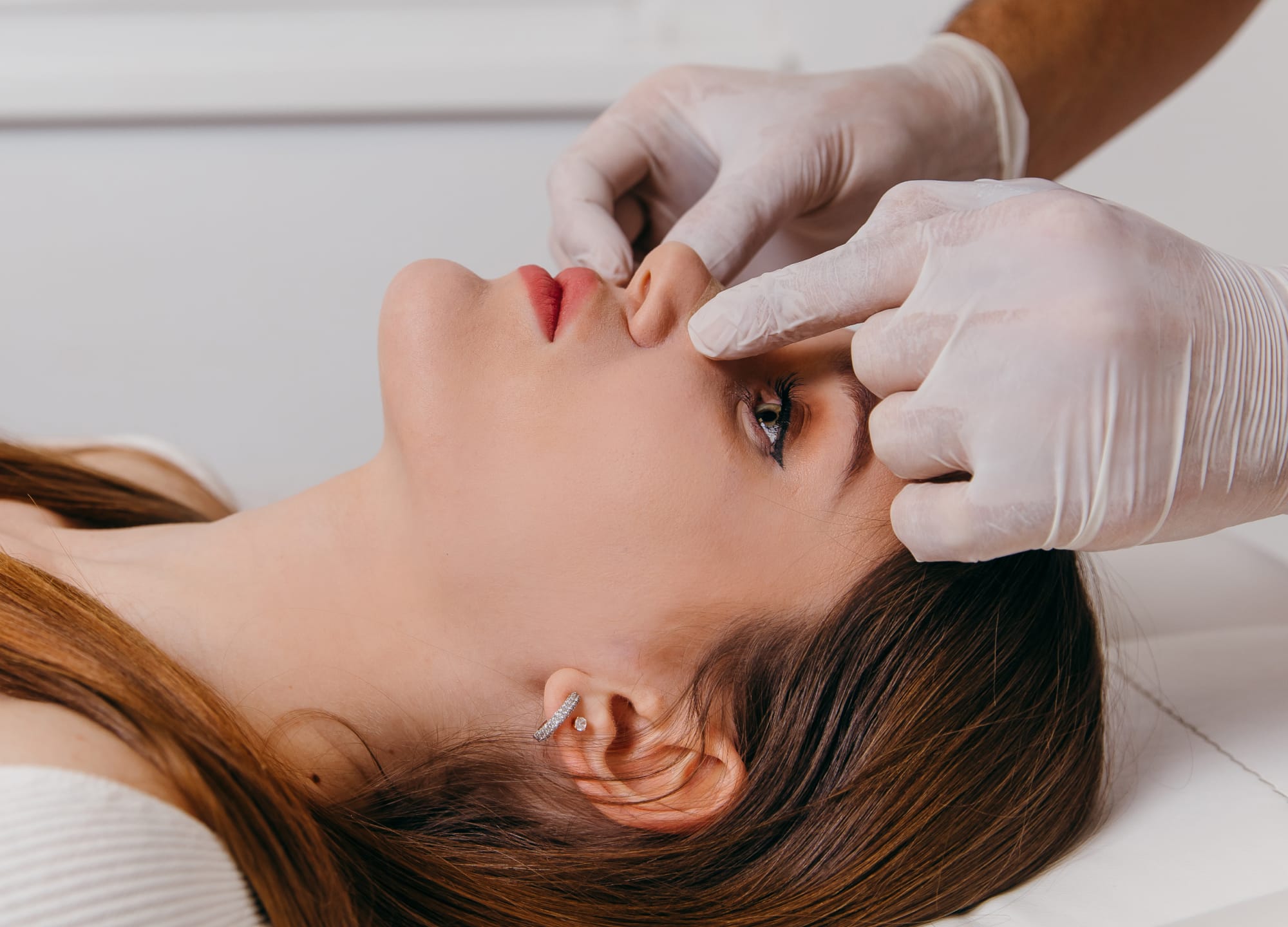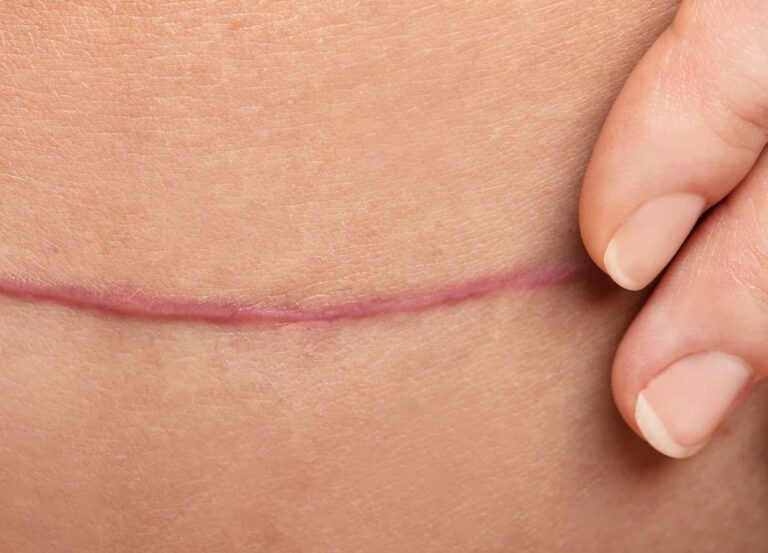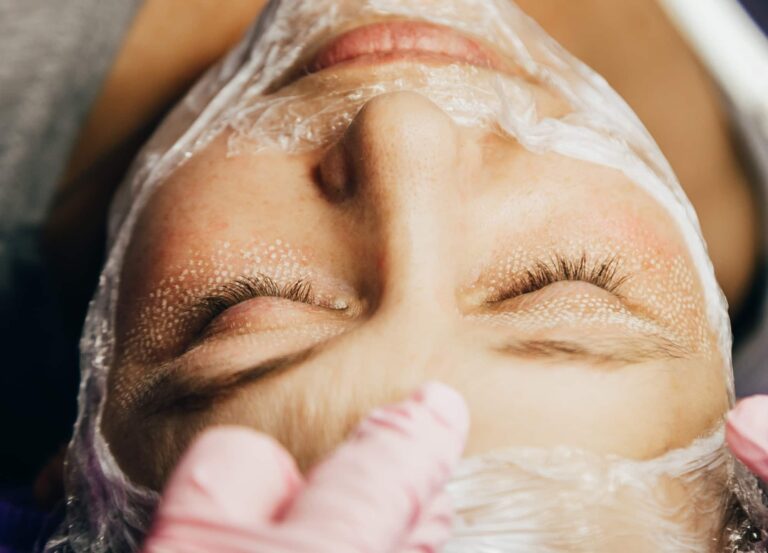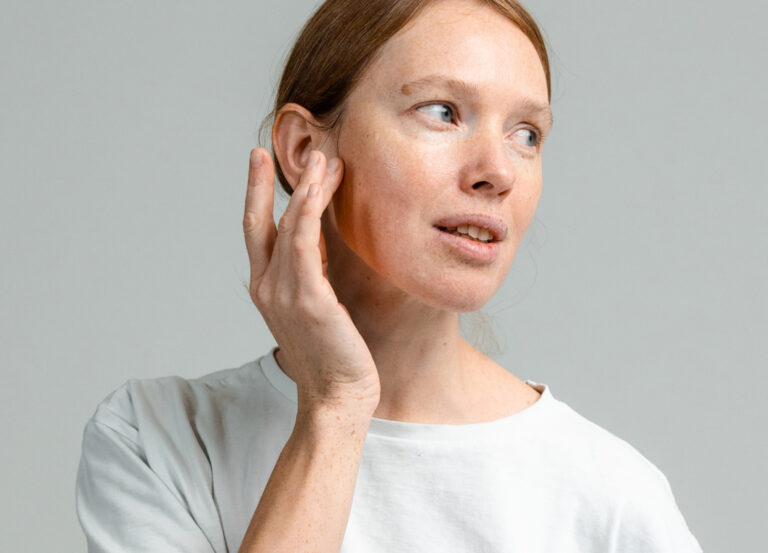From minimally invasive injectables to surgeries heavy on downtime, cosmetic procedures may come with a lot of variables that can ultimately determine their success, like how experienced your doctor is, how your body responds, and what your lifestyle is like, ahead of time. What isn’t always accounted for? Good old human error—on your part.
While we’re not pointing fingers, ignoring your doctor’s orders or not taking the necessary precautions following a procedure can lead to undesirable results that have nothing to do with your provider and everything to do with… well, you see where this is going. And while it can be tempting to go back to your everyday habits as if you hadn’t just had a surgical procedure, especially if you appear and feel ready for it, doing so can make all the difference in your long-term outcome. Scroll ahead for common mistakes that can lead to unwanted side effects—and how to avoid them.
Wearing glasses after rhinoplasty
Skip the sunglasses post-nose job. “Heavy glasses or sunglasses sitting on the nose right after surgery can cause dents or even make a bump while the nose is healing,” says Dr. Jaimie DeRosa, a board-certified facial plastic surgeon in Boston. “If nasal bones are broken in surgery, the fracture sites must heal, which can take a few weeks—so we do not want something heavy, like glasses, sitting on the bones until then.”
This applies for four weeks following your surgery. If glasses are necessary for you, to get around your house without running into objects, consider seeking out a lightweight pair and using a nasal splint in order to avoid putting pressure on your nose, says Dr. Ira Savetsky, a board-certified plastic surgeon in New York City. You could also tape your glasses between your brows, to reduce pressure, he says. (Alternatively: opt for contact lenses when possible.)
Holding a heavy purse or bag after breast augmentation
If you regularly lug around a tote filled with a laptop, magazines, and more, it may do more harm than good when you’re recovering from breast augmentation surgery. The general carry limit is 5 to 10 pounds, says Dr. Savetsky. Any more and it can “put unnecessary strain on the chest muscles and potentially cause damage to the surgical site,” he says. “This can lead to complications such as bleeding, swelling, or implant displacement, which can negatively impact the final result of the procedure.” Consider using a carry-on suitcase out of the question—and maybe empty your handbag of everything but the essentials.
Looking down after chin liposuction
After chin lipo, pause the texting and scrolling for a bit, since looking downward can cause skin to ripple. “When you do liposuction, you’re separating the skin from the subcutaneous tissue and muscle and sucking out all the fat, which creates space,” says Dr. Andrew Peredo, a board-certified plastic surgeon in New York City. “And you want the skin to redrape and stick back down at a right angle when you’re looking straight ahead.”
Compression garments are key here; Dr. Peredo recommends having patients use a chinstrap nonstop for the first 48 hours, before letting them switch to a foam neck collar during the daytime and the chinstrap at night for the next two weeks. The upside? The neck collar will keep you from accidentally looking down at your phone, which may be a habit by now.
Touching your nose hair post-rhinoplasty
Sounds niche, but if you’re tempted to groom your nose hair following a rhinoplasty—an understandable move, if you’re hoping to show off the new shape—hide the tweezers. “This is another no-no, as it can cause inflammation or even an infection in the nose near the operated site,” says Dr. DeRosa. She recommends holding off for at least a month after the surgery and checking with your surgeon before doing any nasal grooming.
Getting on a plane after liposuction
If you’re traveling for a liposuction procedure, schedule your flights with care. “When our patients hop on a plane well before we advise them to, they have a significant amount of swelling and an increased risk of blood clot,” says New York City–based board-certified plastic surgeon Dr. Ryan Neinstein. It may be more comfortable (not to mention cost effective) to recover in your own space, but you should wait at least four days, ideally seven, before you board a flight; talk to your surgeon for exact guidance.
Pooping on your own after a tummy tuck
Stool softeners aren’t sexy, and you might think you can go without the Colace. But if you’re recovering from a tummy tuck? Don’t. “When we remove excess skin from pregnancy and tighten stretched muscles, we really tighten the corset,” Dr. Neinstein says. “After surgery, the bowels can slow down and swell.” (This happens as a result of both anesthesia and pain medication.) If you decide to skip your stool softener, however, you can become bloated, distended, and sore—not to mention slow down the healing process by using your muscles to push.
Taking your bra off after breast augmentation
For many, nothing offers relief quite like removing their bra at the end of the day, but after breast augmentation, bras should stay on 24/7. That’s because during surgery, your provider will likely insert an internal bra, to stabilize the position of the breast implants. “These internal bras are fixed to the chest wall and take a week or so to incorporate into the tissues,” says Dr. Anna Steve, a board-certified plastic surgeon in New York City.
During that week, you should remove the bra only to shower and nothing more; sleeping, for instance, still requires you wear a bra. The risk? “When patients want to walk around bra-free, this can lead to pain and changing position of the breast implant as it relates to the chest wall,” she explains.
Looking up after a facelift
Any physical activity after a facelift can be a no-go—and the more high-impact it is, the riskier it gets. It’s not a matter of the movement so much as your blood pressure. “Increasing one’s blood pressure with physical activities such as high-impact sports or heavy lifting can cause prolonged bruising or even a blood collection, or hematoma, under the skin,” says Dr. DeRosa.
Also off limits: Stretching your neck in any direction, whether you’re cloud gazing or turning your head to talk to someone beside you. Doing so “may also break sutures under the skin, unraveling the results,” she says.
Wearing eye makeup after blepharoplasty
If you’ve had blepharoplasty, aka eyelid surgery, either on its own or alongside a facelift or brow lift (which isn’t uncommon), it’s natural to want to flaunt the results with a smoky eye or dramatic eyeliner look. However, applying eye shadow, eyeliner, even mascara too soon can lead to issues. “Surgical incisions need time to fully heal, and applying eye makeup too early after surgery can cause permanent marks and ‘tattoo’ the incision,” says Dr. DeRosa. Another factor to consider? Some formulas can require elbow grease to remove. As a result, “there is also a risk that one could pull apart the incision when removing makeup, because this skin is super delicate,” she says.
Getting a facial after neuromodulator injections
Going from your injectables appointment to a HydraFacial? Consider rescheduling. “It is thought that applying pressure to the skin right after getting Botox could cause the neuromodulator to migrate and impact the results,” says Dr. Marisa Garshick, a board-certified dermatologist in New York City; she recommends waiting two weeks before getting any other kind of facial treatment..
Wearing tight compression garments after body contouring surgery
Sometimes, compression garments (a standard after certain procedures) can do more harm than good. “While post-op garments are often useful after procedures such as liposuction and breast and body surgery, too much compression can compromise blood flow to the healing tissues,” says Dr. David Shafer, a board-certified plastic surgeon in New York City. “A snug fit is okay, but if the garments are too tight, patients can cause blistering on their skin, affecting their overall healing.”
The same goes with zippers. “Sometimes, there are certain zippers that go down at a weird angle and compress—and you can get a weird contour deformity,” says Dr. Peredo, who will put some padding or foam boards in that area and massage the skin to release tethering. For that reason, he recommends getting compression garments in multiple sizes ahead of surgery and trying them on. “Get one that’s extra snug before surgery, so hopefully, it’ll fit just right after surgery,” he says.











